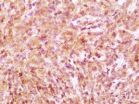(Press-News.org) LAKE ALFRED, FL--Citrus Huanglongbing (citrus greening disease) is highly destructive and fast-spreading, contributing to a reduction in crop yields in Florida and threatening the future of the citrus industry worldwide. Once infected, trees never fully recover and there currently is no cure, although proper nutrient and water management appear to slow tree decline in some situations.
A bacterium called Candidatus Liberibacter asiaticus (CLas), vectored by the Asian citrus psyllid, is the presumed causal agent of the disease. Citrus trees affected by HLB exhibit a progressive degeneration of the phloem tissue that results in partial or total phloem collapse. However, in trees known to have been infected with HLB for several years, vegetative and fruit production continues for several years, although succeeding crops are progressively smaller and of lower quality, and new leaves do not grow to their typical size. According to the authors of a new study, observations of infected citrus suggest that photoassimilate transport takes place in newly developed phloem tissue of young flush and of the older supporting branches and trunk. At some point after leaf development, the phloem eventually collapses and becomes dysfunctional.
Craig Brodersen, Cody Narciso, Mary Reed, and Ed Etxeberria from the University of Florida's Citrus Research and Education Center published the results of a study in HortScience in which they monitored the progression of phloem production over time in field-grown trees to determine how the trees are capable of sustaining new growth, and then documented the subsequent phloem collapse.
The scientists collected fully expanded and developed tissue from HLB-affected trees from 5-year-old 'Valencia' orange trees that had been previously determined to be infected with CLas. They tested trees 3 months before sampling using the diagnostic facilities at the University of Florida's Southwest Florida Research and Education Center using real-time polymerase chain reaction (PCR) analysis. Symptomatic tissue was characterized by blotchy leaf mottle, smaller and misshapen yellow leaves, and was confirmed with a starch test commonly used for HLB identification in the field.
The data suggested that, in HLB-affected trees, production of vegetative and reproductive tissues is supported for a limited time by new phloem production during periodic flushes of new growth. "Our study indicates that a systemic wave of cambial activity can take place in stems, petioles, and midveins of fully expanded leaves and mature stems affected by HLB," said Brodersen. "In newly produced vegetative tissue, even after leaves had already fully expanded, phloem elements contain no signs of deterioration."
The scientists concluded that because of the short window during which the phloem appears healthy, the weeks immediately before and after the spring and summer flush are the most critical from a citrus management perspective.
INFORMATION:
The complete study and abstract are available on the ASHS HortScience electronic journal web site: http://hortsci.ashspublications.org/content/49/1/59.abstract
Founded in 1903, the American Society for Horticultural Science (ASHS) is the largest organization dedicated to advancing all facets of horticultural research, education, and application. More information at ashs.org
Phloem production in Huanglongbing-affected citrus trees
Study recommends management practices to address citrus greening disease
2014-03-26
ELSE PRESS RELEASES FROM THIS DATE:
Study identifies key player in motor neuron death in Lou Gehrig's disease
2014-03-26
Amyotrophic lateral sclerosis, also known as Lou Gehrig's disease, is marked by a cascade of cellular and inflammatory events that weakens and kills vital motor neurons in the brain and spinal cord. The process is complex, involving cells that ordinarily protect the neurons from harm. Now, a new study by scientists in The Research Institute at Nationwide Children's Hospital points to a potential culprit in this good-cell-gone-bad scenario, a key step toward the ultimate goal of developing a treatment.
Motor neurons, or nerve cells, in the brain and spinal cord control ...
Repeat sternotomy for aortic valve replacement safe option for octogenarian patients
2014-03-26
Beverly, MA, March 26, 2014 – Surgical aortic valve replacement generally improves patients' symptoms and prolongs survival. However, the perceived risk of surgical aortic valve replacement in patients over 80 may result in surgery being denied or a recommendation for alternative therapy. Investigators at the Mayo Clinic challenge the way these patients have been managed. They report that repeat sternotomy in patients over 80 who have previously had coronary bypass graft surgery can be done with low risk. Their findings are published in the Journal of Thoracic and Cardiovascular ...
Prestorage conditioning, diphenylamine improve condition of 'honeycrisp' apple
2014-03-26
EAST LANSING, MI--Since the introduction of 'Honeycrisp' apples in 1991, the variety has become a consumer favorite for its unusual texture and delicious flavor. Honeycrisp has increased in popularity with growers as well; Michigan, New York, and Washington boast significant numbers of 'Honeycrisp' orchards. As the growing area dedicated to the variety has grown, the need to find better methods for improving storage performance has become more important to growers. Because 'Honeycrisp' is very sensitive to low temperatures and can be damaged by controlled-atmosphere conditions, ...
Nitrogen source determined significant for inflorescence development in Phalaenopsis
2014-03-26
TAIPEI, TAIWAN--The Phalaenopsis orchid, also known as the moth orchid, is the most important pot flower in terms of market value in the world's major floriculture markets. Because nitrogen significantly affects the growth and flowering of Phalaenopsis, nitrogen needs during flowering are of particular interest to growers. Researchers Hadi Susilo, Ying-Chun Peng, and Yao-Chien Alex Chang from the Department of Horticulture and Landscape Architecture at National Taiwan University published a study in the Journal of the American Society for Horticultural Science that determined ...
Engineered bacteria produce biofuel alternative for high-energy rocket fuel
2014-03-26
Researchers at the Georgia Institute of Technology and the Joint BioEnergy Institute have engineered a bacterium to synthesize pinene, a hydrocarbon produced by trees that could potentially replace high-energy fuels, such as JP-10, in missiles and other aerospace applications. With improvements in process efficiency, the biofuel could supplement limited supplies of petroleum-based JP-10, and might also facilitate development of a new generation of more powerful engines.
By inserting enzymes from trees into the bacterium, first author and Georgia Tech graduate student ...
Ancient sea creatures filtered food like modern whales
2014-03-26
The animals lived 520 million years ago during the Early Cambrian, a period known as the 'Cambrian Explosion' in which all the major animal groups and complex ecosystems suddenly appeared. Tamisiocaris belongs to a group of animals called anomalocarids, a type of early arthropod that included the largest and some of the most iconic animals of the Cambrian period. They swam using flaps down either side of the body and had large appendages in front of their mouths that they most likely used to capture larger prey, such as trilobites.
However, the newly discovered fossils ...
First ring system around asteroid
2014-03-26
The rings of Saturn are one of the most spectacular sights in the sky, and less prominent rings have also been found around the other giant planets. Despite many careful searches, no rings had been found around smaller objects orbiting the Sun in the Solar System. Now observations of the distant minor planet [1] (10199) Chariklo [2] as it passed in front of a star have shown that this object too is surrounded by two fine rings.
"We weren't looking for a ring and didn't think small bodies like Chariklo had them at all, so the discovery — and the amazing amountof detail ...
Gut metabolism changes -- not stomach size -- linked to success of vertical sleeve gastrectomy
2014-03-26
CINCINNATI—It's not the size of the stomach that causes weight loss after a specific type of bariatric surgery, but rather a change in the gut metabolism, say researchers from the University of Cincinnati (UC), the University of Gothenburg in Sweden and Cincinnati Children's Hospital Medical Center.
The scientists, publishing their results in the March 26, 2014, advanced online edition of Nature, have found that following vertical sleeve gastrectomy, there is a change in bile acids that bind to a nuclear receptor called FXR. In the absence of FXR, the researchers showed, ...
Some breast cancer tumors hijack patient epigenetic machinery to evade drug therapy
2014-03-26
PITTSBURGH, March 26, 2014 – A breast cancer therapy that blocks estrogen synthesis to activate cancer-killing genes sometimes loses its effectiveness because the cancer takes over epigenetic mechanisms, including permanent DNA modifications in the patient's tumor, once again allowing tumor growth, according to an international team headed by the University of Pittsburgh Cancer Institute (UPCI).
The finding warrants research into adding drugs that could prevent the cancer from hijacking patients' repressive gene regulatory machinery, which might allow the original therapy ...
First comprehensive atlas of human gene activity released
2014-03-26
Boston, MA — A large international consortium of researchers has produced the first comprehensive, detailed map of the way genes work across the major cells and tissues of the human body. The findings describe the complex networks that govern gene activity, and the new information could play a crucial role in identifying the genes involved with disease.
"Now, for the first time, we are able to pinpoint the regions of the genome that can be active in a disease and in normal activity, whether it's in a brain cell, the skin, in blood stem cells or in hair follicles," said ...
LAST 30 PRESS RELEASES:
Estimating unemployment rates with social media data
Climate policies can backfire by eroding “green” values, study finds
Too much screen time too soon? A*STAR study links infant screen exposure to brain changes and teen anxiety
Global psychiatry mourns Professor Dan Stein, visionary who transformed mental health science across Africa and beyond
KIST develops eco-friendly palladium recovery technology to safeguard resource security
Statins significantly reduce mortality risk for adults with diabetes, regardless of cardiovascular risk
Brain immune cells may drive more damage in females than males with Alzheimer’s
Evidence-based recommendations empower clinicians to manage epilepsy in pregnancy
Fungus turns bark beetles’ defenses against them
There are new antivirals being tested for herpesviruses. Scientists now know how they work
CDI scientist, colleagues author review of global burden of fungus Candida auris
How does stroke influence speech comprehension?
B cells transiently unlock their plasticity, risking lymphoma development
Advanced AI dodel predicts spoken language outcomes in deaf children after cochlear implants
Multimodal imaging-based cerebral blood flow prediction model development in simulated microgravity
Accelerated streaming subgraph matching framework is faster, more robust, and scalable
Gestational diabetes rose every year in the US since 2016
OHSU researchers find breast cancer drug boosts leukemia treatment
Fear and medical misinformation regarding risk of progression or recurrence among patients with breast cancer
Glucagonlike peptide-1 receptor agonists and asthma risk in adolescents with obesity
Reviving dormant immunity: Millimeter waves reprogram the immunosuppressive microenvironment to potentiate immunotherapy without obvious side effects
Safety decision-making for autonomous vehicles integrating passenger physiological states by fNIRS
Fires could emit more air pollution than previously estimated
A new way to map how cells choose their fate
Numbers in our sights affect how we perceive space
SIMJ announces global collaborative book project in commemoration of its 75th anniversary
Air pollution exposure and birth weight
Obstructive sleep apnea risk and mental health conditions among older adults
How talking slows eye movements behind the wheel
The Ceramic Society of Japan’s Oxoate Ceramics Research Association launches new international book project
[Press-News.org] Phloem production in Huanglongbing-affected citrus treesStudy recommends management practices to address citrus greening disease



